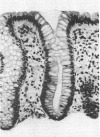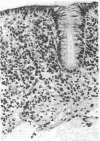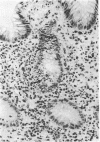Abstract
Some patients with chronic idiopathic diarrhea have an apparent nonspecific inflammation of colonic mucosa, even though their colons appear normal by barium enema and colonoscopy. This has been referred to as microscopic colitis. However, the significance of this finding is unclear, because the ability of pathologists to accurately distinguish mild degrees of abnormality has not been established. Furthermore, even if the mucosa of these patients is nonspecifically inflamed, it is not known whether this is associated with deranged colonic function that could contribute to the development of chronic diarrhea. To assess these questions, we first examined colonic biopsy specimens in a blinded fashion, comparing biopsy results from patients with microscopic colitis with biopsy specimens from subjects in two control groups. This analysis revealed that colonic mucosa from six patients with microscopic colitis was in fact abnormal. For example, their mucosa contained an excess of both neutrophiles and round cells in the lamina propria, cryptitis, and reactive changes. These and other differences were statistically significant. Second, colonic absorption, measured by the steady state nonabsorbable marker perfusion method, was severely depressed in the patients. For example, mean water absorption rate was 159 ml/h in normal subjects and was reduced to only 26 ml/h in six patients with microscopic colitis. Results of net and unidirectional electrolyte fluxes and of electrical potential difference suggested that colonic fluid absorption was abnormal because of reduced active and passive sodium and chloride absorption and because of reduced Cl/HCO3 exchange. Small intestinal fluid and electrolyte absorption was abnormally reduced in two of the six patients, suggesting the possibility of coexistent small intestinal involvement in some of these patients. We conclude that nonspecific inflammation of colonic mucosa is associated with a severe reduction of colonic fluid absorption, and that the latter probably contributes to the development of chronic diarrhea.
Full text
PDF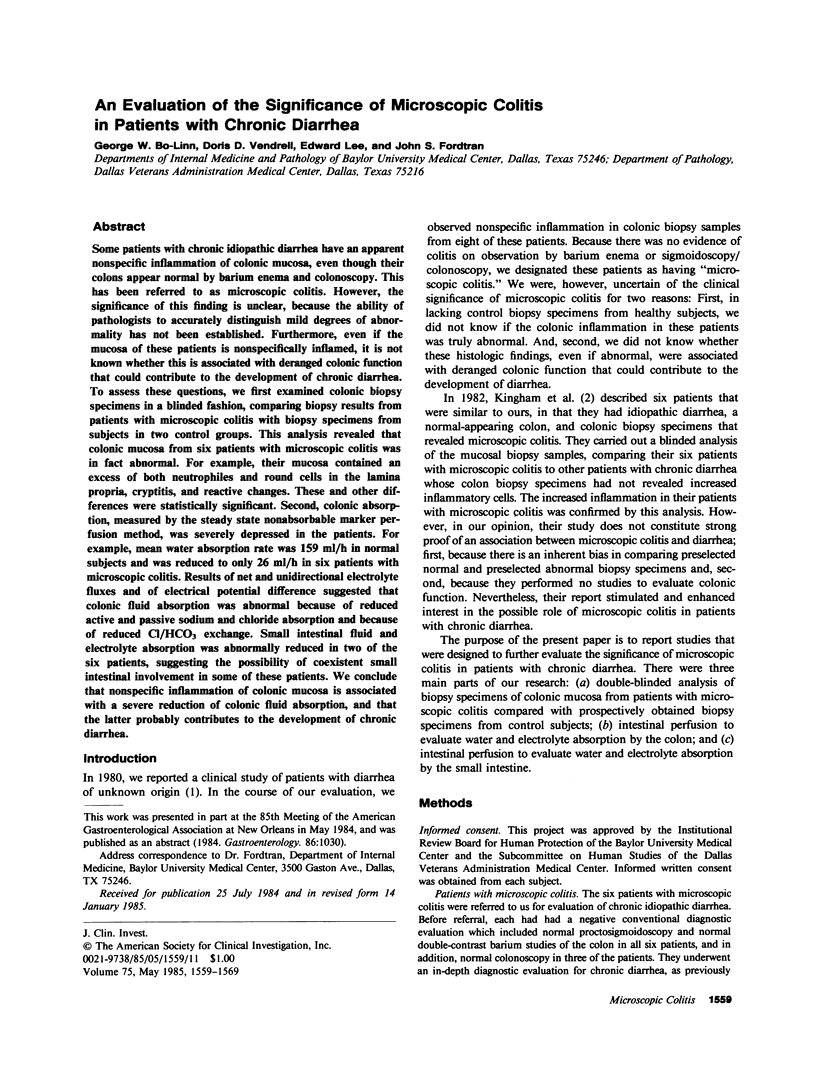
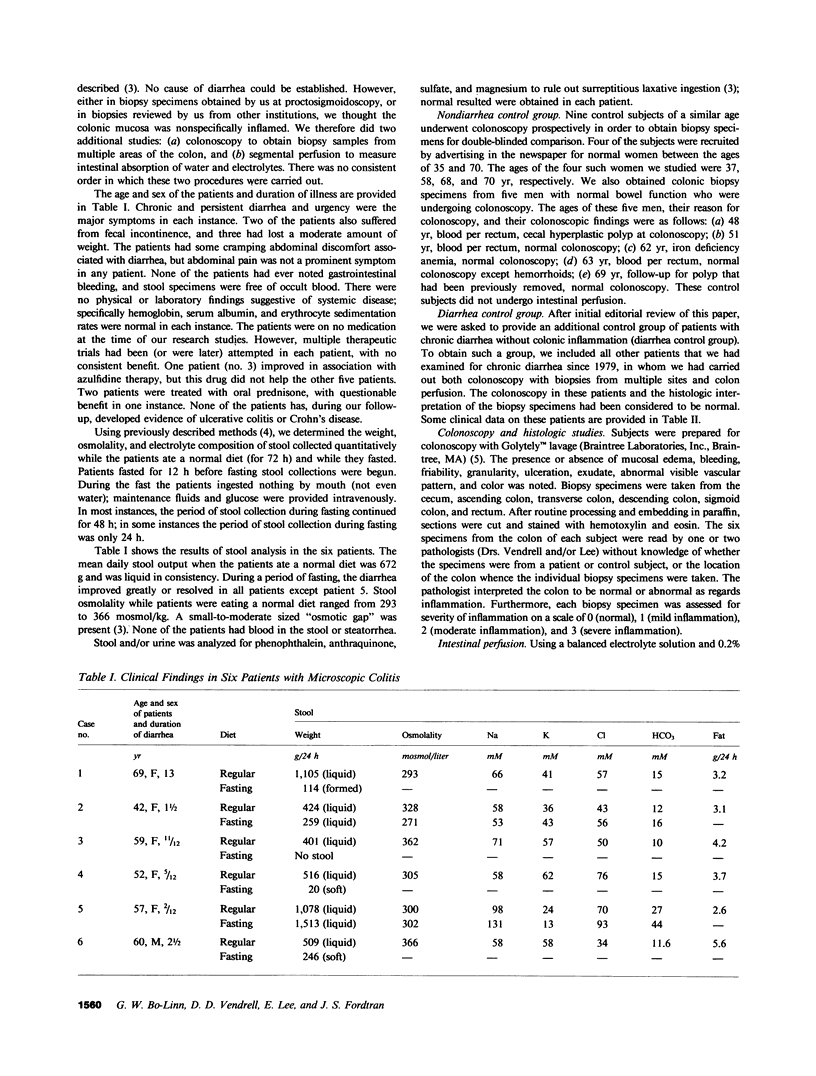
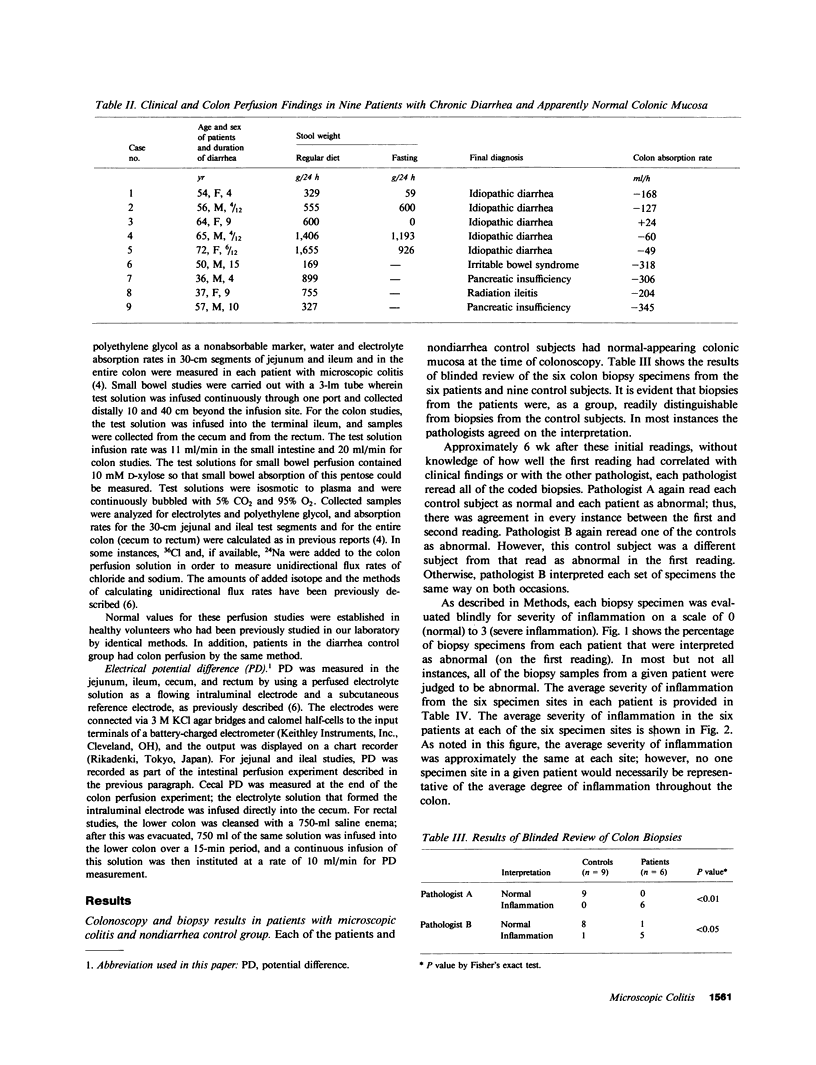
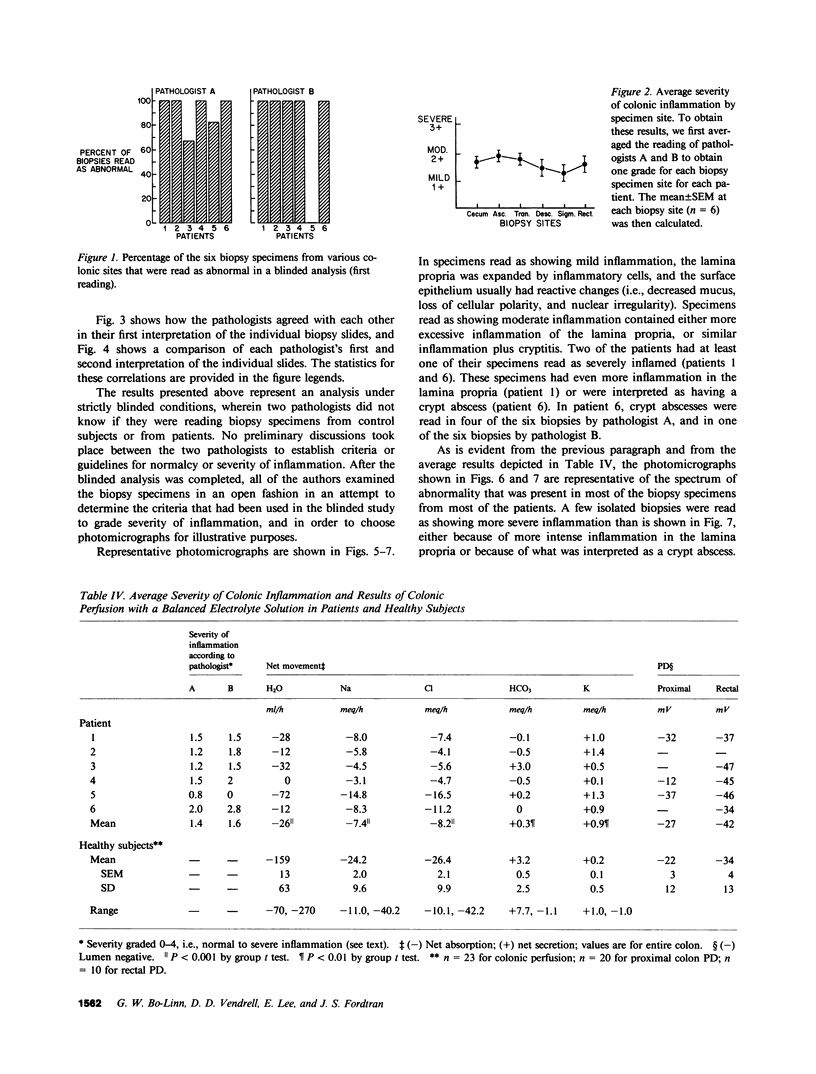
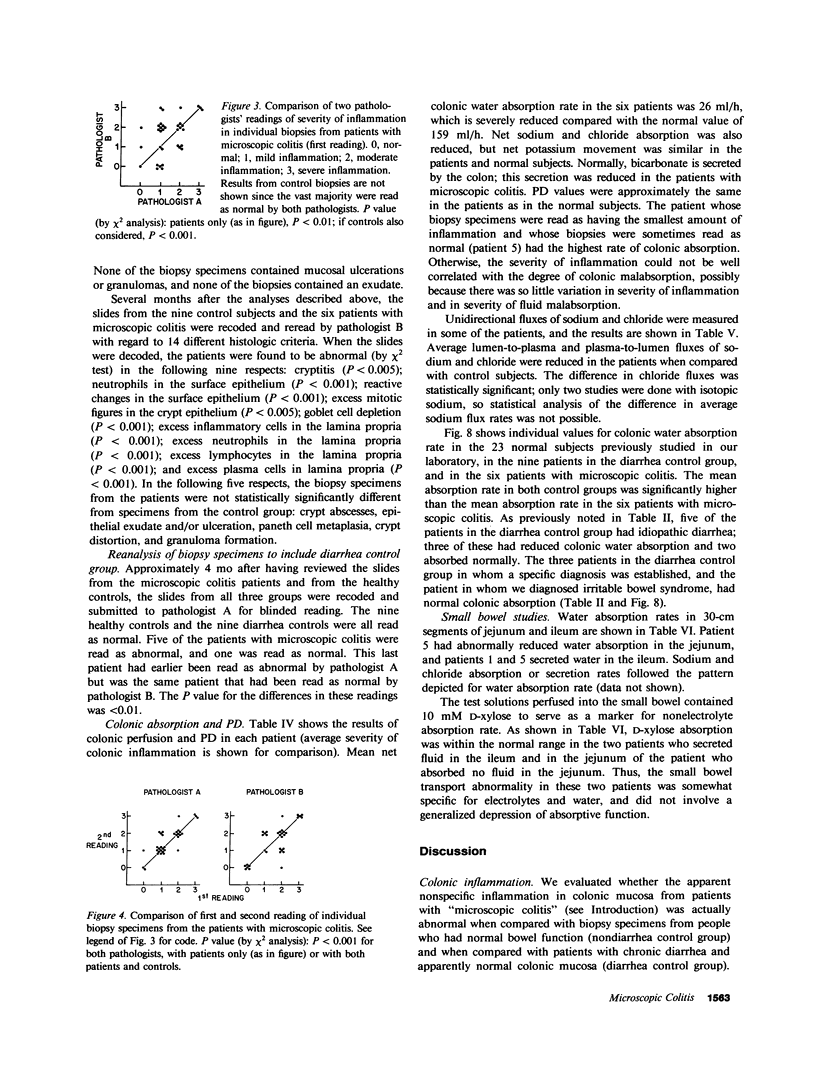
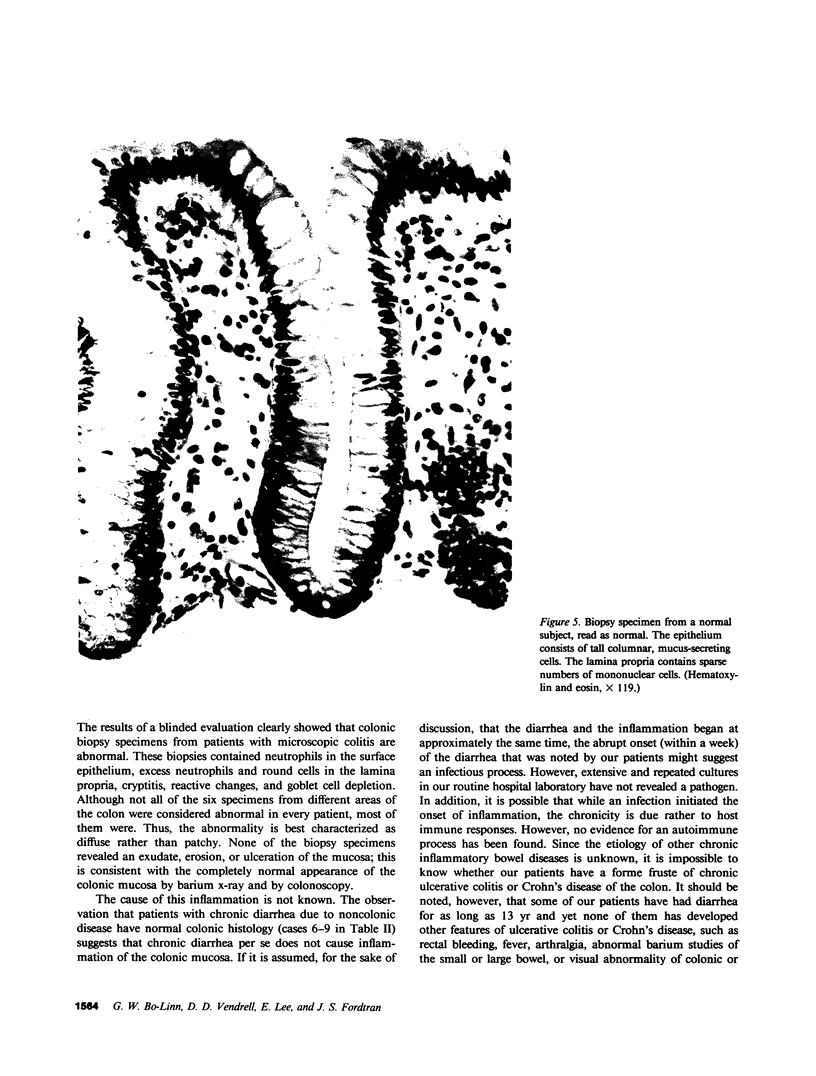
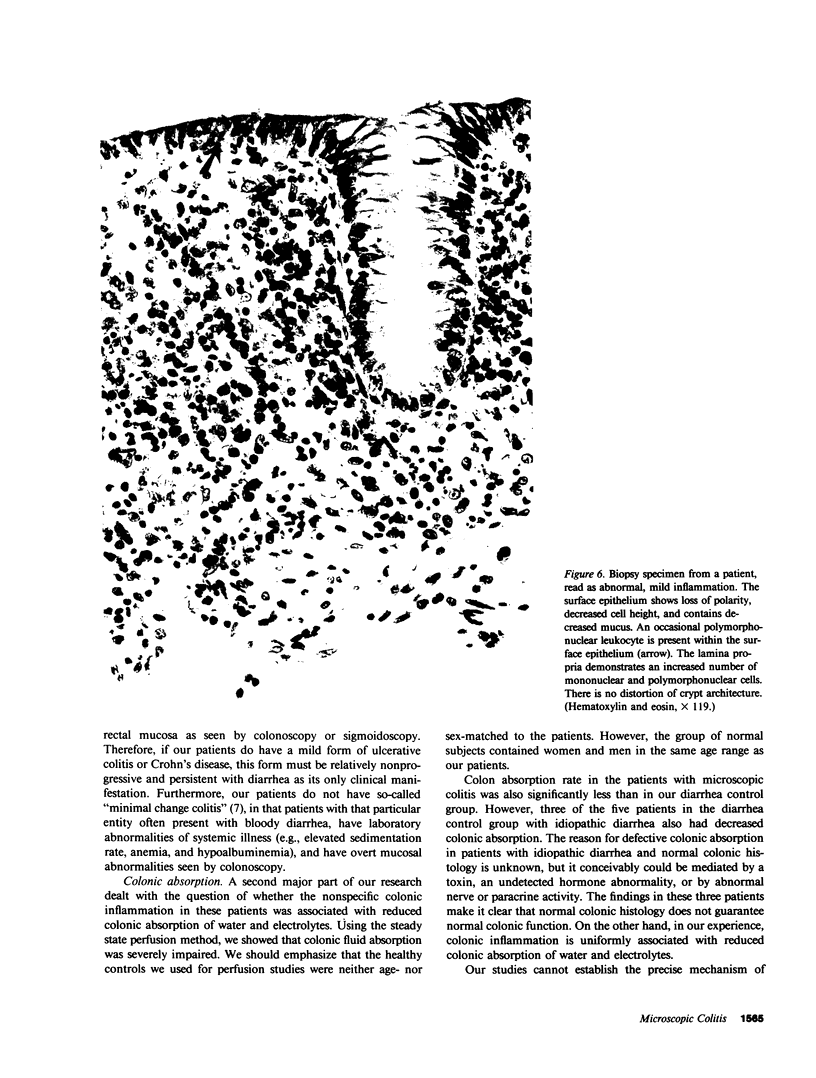
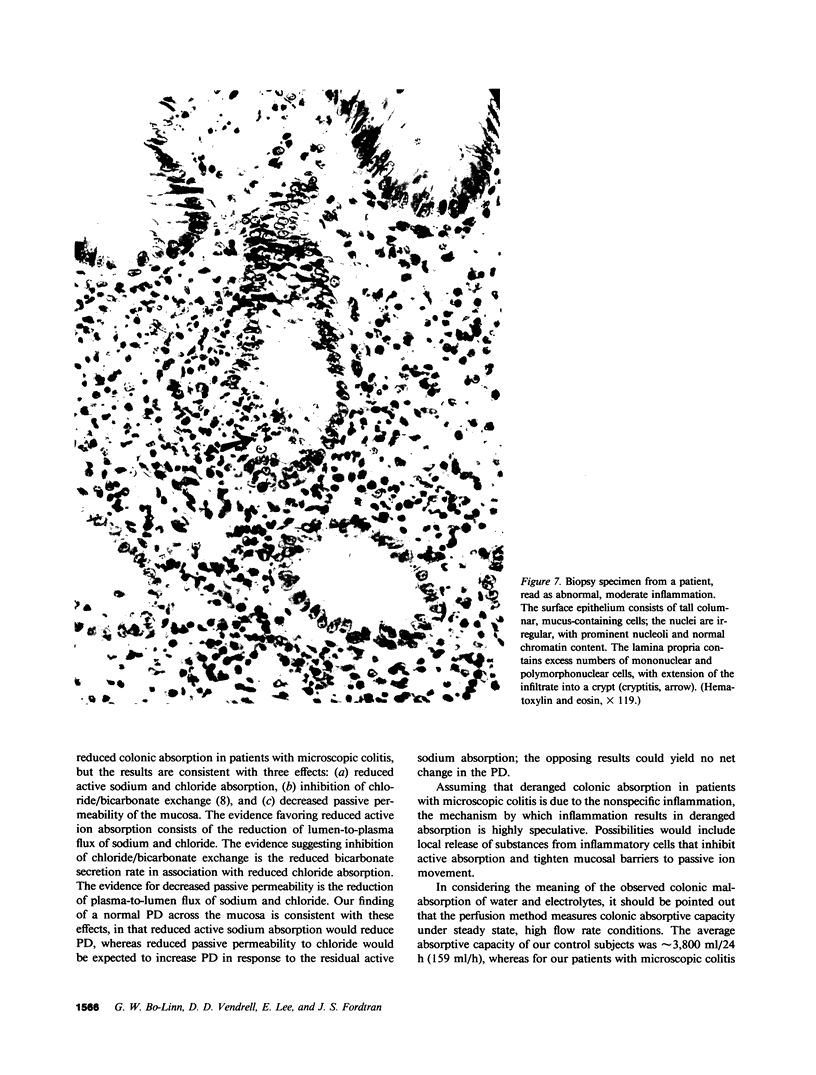
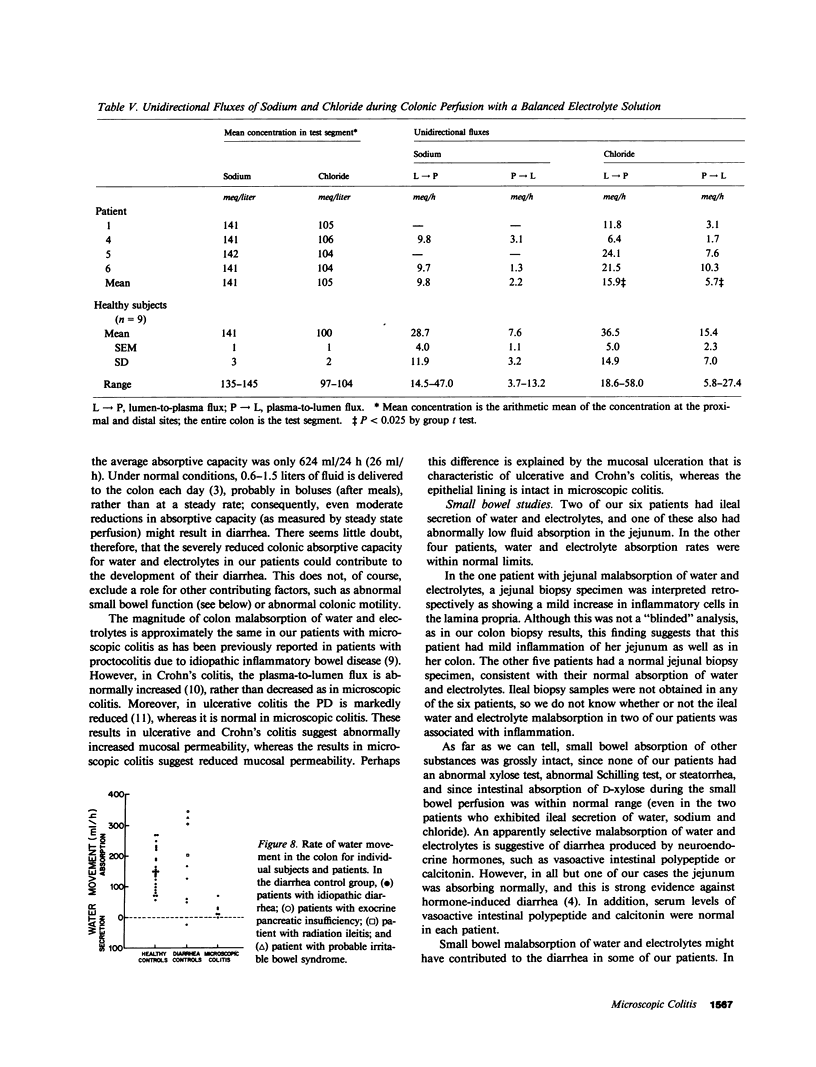
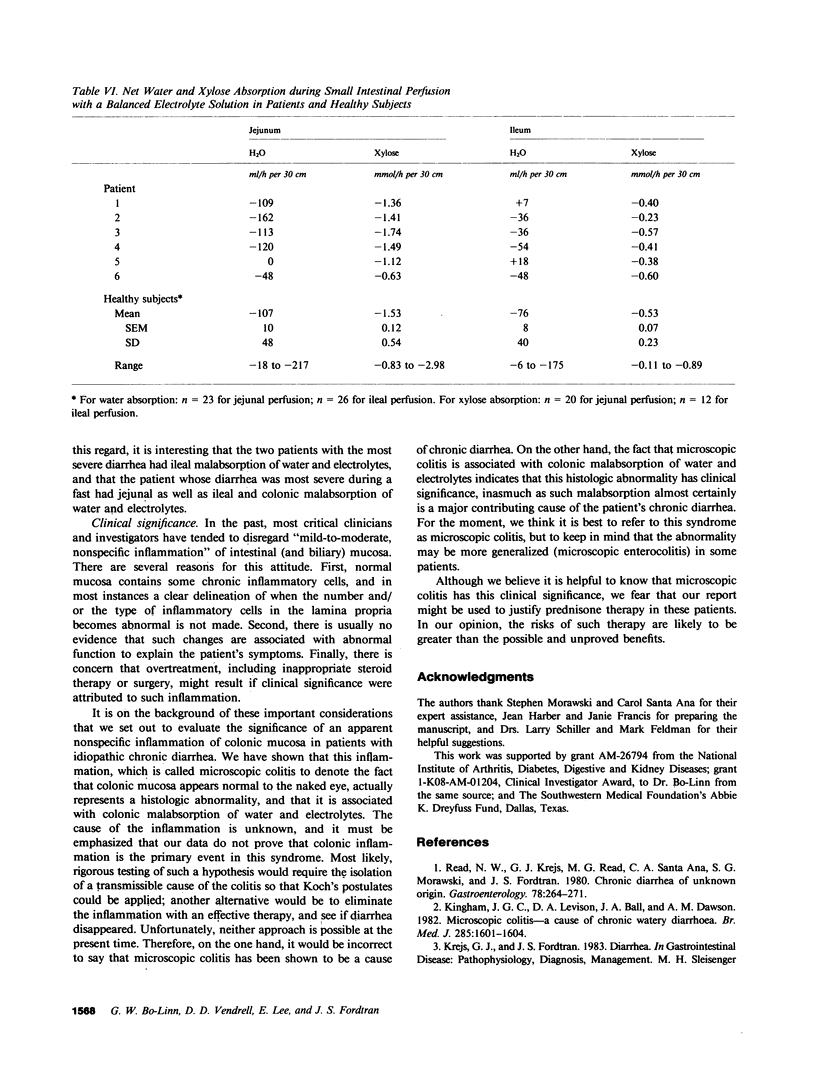
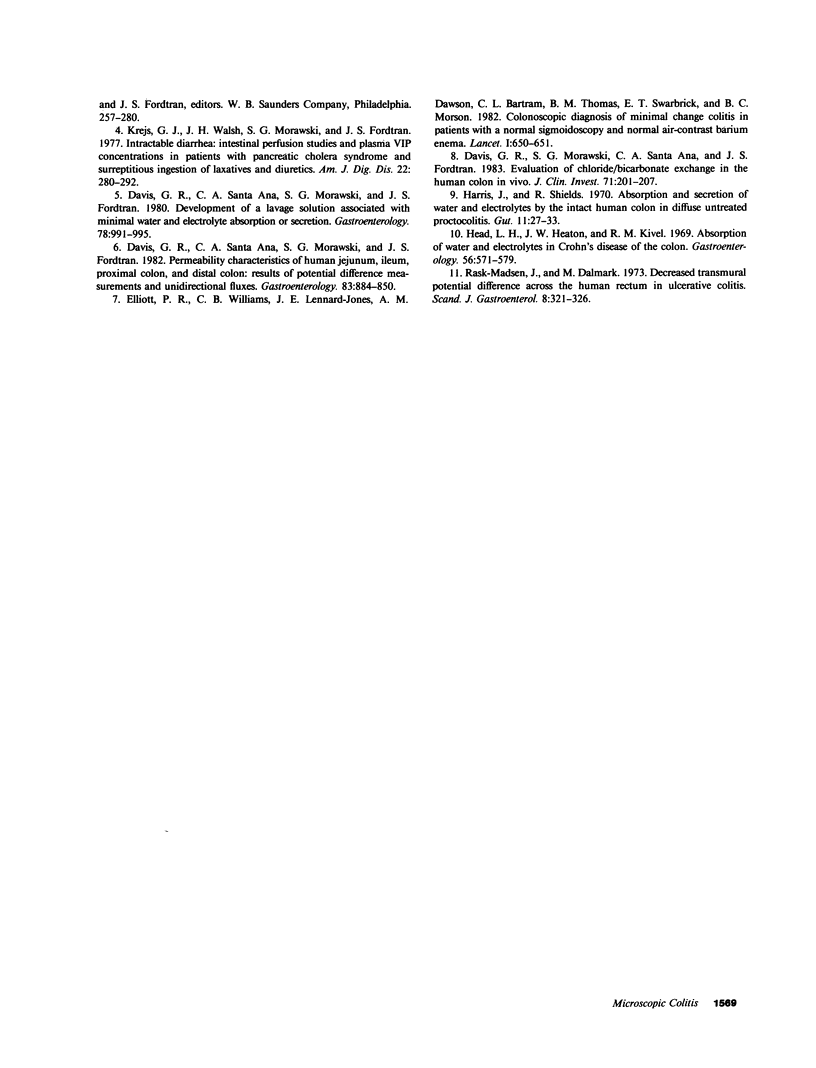
Images in this article
Selected References
These references are in PubMed. This may not be the complete list of references from this article.
- Davis G. R., Morawski S. G., Santa Ana C. A., Fordtran J. S. Evaluation of chloride/bicarbonate. Exchange in the human colon in vivo. J Clin Invest. 1983 Feb;71(2):201–207. doi: 10.1172/JCI110760. [DOI] [PMC free article] [PubMed] [Google Scholar]
- Davis G. R., Santa Ana C. A., Morawski S. G., Fordtran J. S. Development of a lavage solution associated with minimal water and electrolyte absorption or secretion. Gastroenterology. 1980 May;78(5 Pt 1):991–995. [PubMed] [Google Scholar]
- Davis G. R., Santa Ana C. A., Morawski S. G., Fordtran J. S. Permeability characteristics of human jejunum, ileum, proximal colon and distal colon: results of potential difference measurements and unidirectional fluxes. Gastroenterology. 1982 Oct;83(4):844–850. [PubMed] [Google Scholar]
- Elliott P. R., Williams C. B., Lennard-Jones J. E., Dawson A. M., Bartram C. I., Thomas B. M., Swarbrick E. T., Morson B. C. Colonoscopic diagnosis of minimal change colitis in patients with a normal sigmoidoscopy and normal air-contrast barium enema. Lancet. 1982 Mar 20;1(8273):650–651. doi: 10.1016/s0140-6736(82)92203-6. [DOI] [PubMed] [Google Scholar]
- Harris J., Shields R. Absorption and secretion of water and electrolytes by the intact human colon in diffuse untreated proctocolitis. Gut. 1970 Jan;11(1):27–33. doi: 10.1136/gut.11.1.27. [DOI] [PMC free article] [PubMed] [Google Scholar]
- Head L. H., Heaton J. W., Jr, Kivel R. M. Absorption of water and electrolytes in Crohn's disease of the colon. Gastroenterology. 1969 Mar;56(3):571–579. [PubMed] [Google Scholar]
- Kingham J. G., Levison D. A., Ball J. A., Dawson A. M. Microscopic colitis-a cause of chronic watery diarrhoea. Br Med J (Clin Res Ed) 1982 Dec 4;285(6355):1601–1604. doi: 10.1136/bmj.285.6355.1601. [DOI] [PMC free article] [PubMed] [Google Scholar]
- Krejs G. J., Walsh J. H., Morawski S. G., Fordtran J. S. Intractable diarrhea. Intestinal perfusion studies and plasma VIP concentrations in patients with pancreatic cholera syndrome and surreptitious ingestion of laxatives and diuretics. Am J Dig Dis. 1977 Apr;22(4):280–292. doi: 10.1007/BF01072184. [DOI] [PubMed] [Google Scholar]
- Rask-Madsen J., Dalmark M. Decreased transmural potential difference across the human rectum in ulcerative colits. Scand J Gastroenterol. 1973;8(4):321–326. [PubMed] [Google Scholar]
- Read N. W., Krejs G. J., Read M. G., Santa Ana C. A., Morawski S. G., Fordtran J. S. Chronic diarrhea of unknown origin. Gastroenterology. 1980 Feb;78(2):264–271. [PubMed] [Google Scholar]



